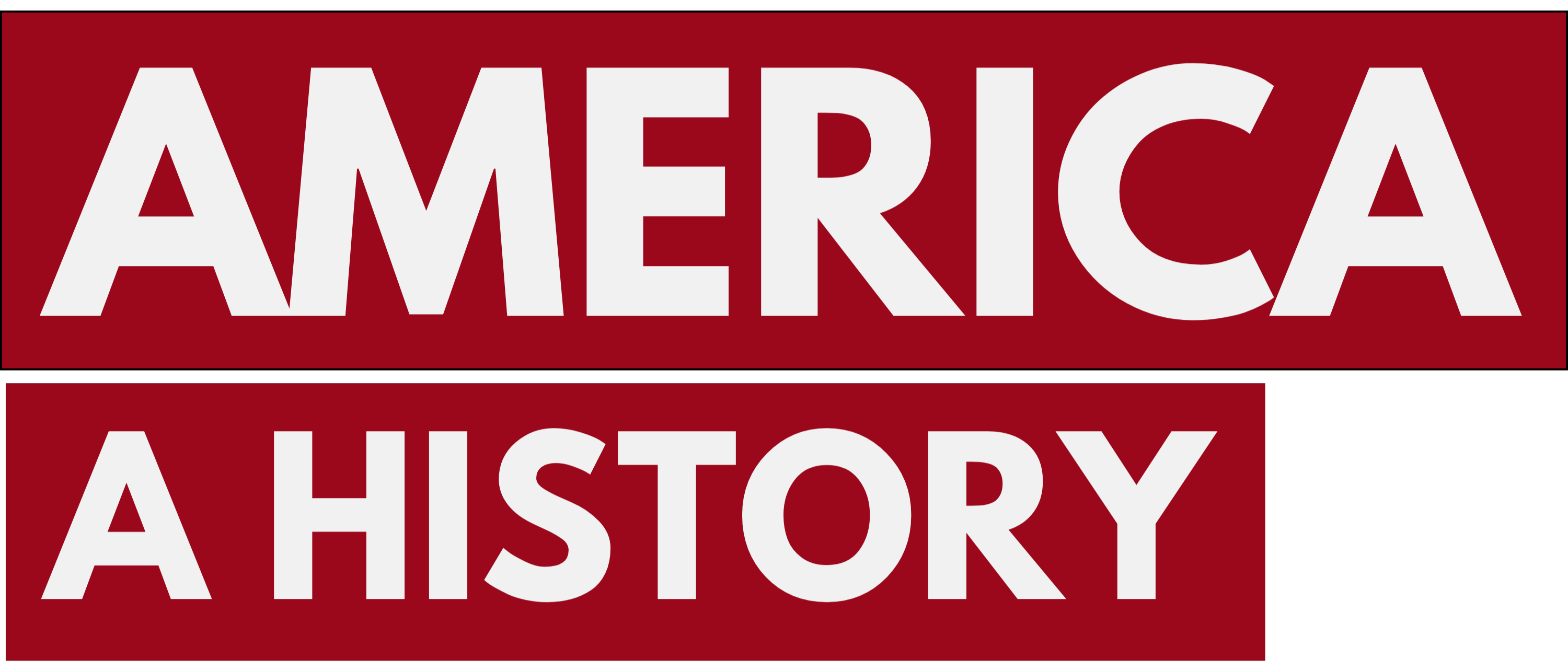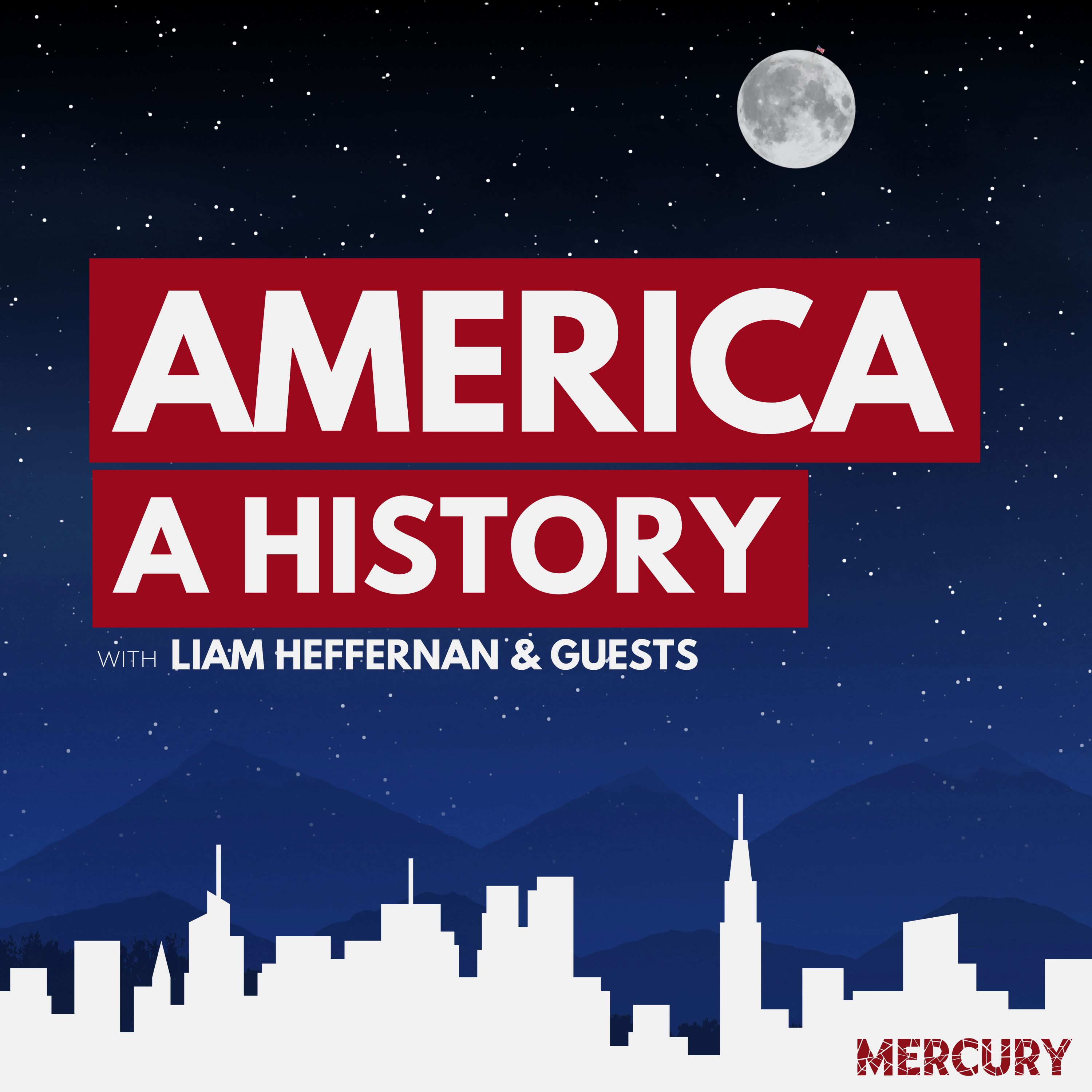bonus
BONUS: What Really Keeps the White House Running?
In this special, unfiltered bonus episode, you get a little sneak peak behind the curtain of how America: A History is made, which is fitting as we're also going backstage at the White House to find out what actually keeps the Presidential home running.
This episode shines a light on how each president, regardless of their party, has made improvements to this iconic building, leaving it in better shape than they found it.
Our guest from the White House Historical Association shares some juicy tidbits about the day-to-day operations and the dedicated staff that keep everything running smoothly—because let’s be real, the White House isn’t just a nine-to-five gig!
We even explore some quirky roles that you might not expect, like who’s responsible for the flowers and who keeps the lights on (spoiler: it’s not just the President!).
So, whether you're a politics buff or just curious about what goes down in that grand ol’ house, we’ve got a delightful mix of history, humor, and insights waiting for you. Grab your earbuds and settle in for a fun chat about the heartbeat of American democracy!
...
Special guest for this episode:
- Stewart McLaurin, the president of the White House Historical Association, and the author of three books including the 2021 anthology James Hoban: Designer and Builder of the White House.
...
Highlights from this episode:
- The White House has evolved through multiple presidencies, each leaving it better than before.
- Despite political differences, there's a shared respect for preserving the White House's history.
- The daily operations of the White House are run by an impressive, dedicated staff that works 24/7.
- Many people are surprised by the small size of the White House compared to their expectations.
- The original design of the White House was meant to reflect American values without being too grand.
- If it weren't for James Madison's decision, the White House could have been built in Ohio instead of D.C.!
...
Additional Resources:
The White House Historical Association: https://www.whitehousehistory.org/
The White House 1600 Sessions: https://open.spotify.com/show/75CjkWPYFGXZvz2u9Xpeid?si=f527f98c7dad4c9a
James Hoban : Designer and Builder of the White House Hardcover by Stewart McLaurin
The People’s House: A White House Experience: https://www.thepeopleshouse.org/
...
And if you like this episode, you might also love:
What Was the Constitutional Convention?
Why Does the President Only Serve Two Terms?
Is the President Above the Law?
...
SUPPORT THE SHOW
Individual Supporters: https://america-a-history.captivate.fm/support
University Partners: https://america-a-history.captivate.fm/partnerships
Brand Sponsors: liam@mercurypodcasts.com
Contact us: america@podcastsbyliam.com
We're partnering with NeoTaste, the exclusive membership card unlocking huge discounts at hundreds of restaurants across the UK & Europe. Get your first 2 months free by using the code AAH at checkout. Sign up here: https://neotaste.com/gb?code=AAH&a=2
Are you a University or college? Become an academic partner and your name will appear right here.
Transcript
Great.
Speaker A:Okay, so what we'll do this.
Speaker A:I mean, this is just sort of a five, ten minute thing that we like to put out on the feed about a week after the episode goes out, just to get a few more ears onto the podcast.
Speaker A:So just, I guess, talk a little bit more about present day because we didn't really touch on that.
Speaker A:And perhaps if we can, without getting you into too much trouble, maybe talk about maybe the difference that Trump has made in recent years to the White House.
Speaker B:Well, there are changes that occur with every presidency.
Speaker B: e of being in this role since: Speaker B:And I can tell you that each though of those that I have worked with have left the House in better condition than when they came in.
Speaker B:There is the wear and tear that needs to be taken care of.
Speaker B:But there are also improvements in things that are done by every presidency that are passed on to those that follow them.
Speaker B: lady since we were founded in: Speaker A:Yeah.
Speaker A:And you know, I guess regardless of whatever side of the political fence that you're on, I guess that's been the one constant as you sort of touched on in the main episode.
Speaker A:You know, presidents come and go, but you know, there's this enduring respect for preserving the White House.
Speaker A:And that's really the one constant isn't.
Speaker B:Is the House is the same and improving for every president, and we are there as a constant, as are the resident staff that are at the House, that stay from presidency to presidency to take care of the family, but also to take care of the physical plan and structure of the building.
Speaker A:And actually, we touched in the main episode about some of the staff that keep the White House running day to day.
Speaker A:I wonder, I'm putting you on the spot here completely, but are there any sort of slightly offbeat roles within the White House that maybe people wouldn't think of but actually need doing?
Speaker B:Well, that's an interesting question considering if you look at the whole infrastructure that supports His Majesty the King and all the various roles and titles that are many, all important, I'm certain.
Speaker B:But many of them have titles that have lost their meaning or their purpose over the course of history, at least to an American who hears them for the first time.
Speaker B:But the roles that are in the White House are very clear and defined and specific.
Speaker B:Plumber, electrician, florist, chef, maid, butler, very utilitarian, very functional.
Speaker B:And they are each defined by the function that they serve.
Speaker B:But they operate as a team and almost as a family.
Speaker B:And they're seamless.
Speaker B:The White House is certainly not a nine to five place.
Speaker B:It operates 24 hours a day, seven days a week.
Speaker B:The President comes and goes.
Speaker B:Maybe the Presidential retreat at Camp David, or in the case of President Trump, down to Mar a Lago or his home in New York or New York Jersey.
Speaker B:But the House is always operating and is there to serve the President and the Presidency and the President's family.
Speaker B:And you never know what may need to occur or to have happen or to a press conference or an event or the hosting of this occasion or that.
Speaker B:And so that staff is so professional and so well trained that they manage that flawlessly.
Speaker A:That's so interesting.
Speaker A:And I'm actually so much more interested in the inner workings of the White House than I've ever been in Buckingham palace or anything on my own country.
Speaker A:And I wonder, I mean, you run the White House Historical association, so I'm sure you get many queries or research requests and contacts from people who want to know more information.
Speaker A:Have you ever noticed any particular sort of trends in the type of inquiries people have about the White House over time?
Speaker B:The questions that I get most often are about the surprise and size of the White House when you go into it, I think because in your mind's eye, you're expecting this large, expansive, Buckingham palace sized building and it's not that at all.
Speaker B:And I don't think our American, our friends in the American television and movie industry have done us any favors in that regard.
Speaker B:I love the television show West Wing, but you see these large, long corridors of people running here and there.
Speaker B:And it portrays as if it's this large space and it's really not, it's very tight, not enough space, people running here and there like they do.
Speaker B:But it's, it's a small place.
Speaker B:There, of course, were many discussions when the house was built as to what it should represent.
Speaker B:Should it be large, like a European palace, to stand toe to toe with the capitals of Europe?
Speaker B:Should it be more humble and American in nature?
Speaker B:And so what George Washington settled on was the image of an Irish country house, something that was substantial for American purposes, but was not too grand to appear to be a monarchy, as we had just fought the revolution in that context.
Speaker B:And so we have today the basics of that original house.
Speaker B:It, of course, has been added onto with east wings and west wings, north and south portico.
Speaker B: sign and build it back in the: Speaker A:And just one final question that I'm going to again put you on the spot for.
Speaker A:If history took a completely different course and you're aware of all 50 states, as you have the choice between any of the 50 currently, and you could rebuild the White House and put it wherever you want in the US where would you choose?
Speaker A:And it can't be DC because that's a cop out answer a terrific question.
Speaker B:And I'll use a little bit of historical answer.
Speaker B:After the British fire and the house had been burned and the British had advanced so easily on this city, there was a push in Congress to move it to someplace safe.
Speaker B:They thought, let's move it to higher ground in Washington or deep into what is Rock Creek Park, a wooded area here.
Speaker B:Others advocated, no, let's take it farther west as far as the country extended at the time, which would have been Cincinnati, Ohio.
Speaker B:So the capital today could be in Ohio had that school of thought prevailed.
Speaker B:But it was James Madison who said, no, the house will be rebuilt as it was where it was.
Speaker B:That was not a total loss.
Speaker B:There were still some walls and structure that had to be rebuil, but it was done so and recreated just as it had initially been built.
Speaker B:Our country, of course, has grown and expanded westward.
Speaker B:And this capital is far on the east coast and it's not centrally located geographically in our nation.
Speaker B:So if you were going to look for a central type of location in the nation today, that might fall into maybe a Dallas, Texas or Chicago or St. Louis or Kansas City, but I think that would be really difficult to do.
Speaker B:American school children are raised thinking and studying and learning about Washington D.C. as the nation's capital.
Speaker B:I first came here as a fifth grader and then again as an eighth grader.
Speaker B:And it brought to life for me these important places and spaces where our government operates, where our democracy thrives.
Speaker B:And I think that Americans don't view it as geographically isolated, but they view it as the heartbeat, the capital of our country.
Speaker B:In our country there are other, many, many other great cities.
Speaker B:Some of them have unique focus, like New York is viewed as the financial capital, like Los Angeles as the entertainment capital.
Speaker B:Well, certainly Washington D.C. is the governing capital of the United States.


